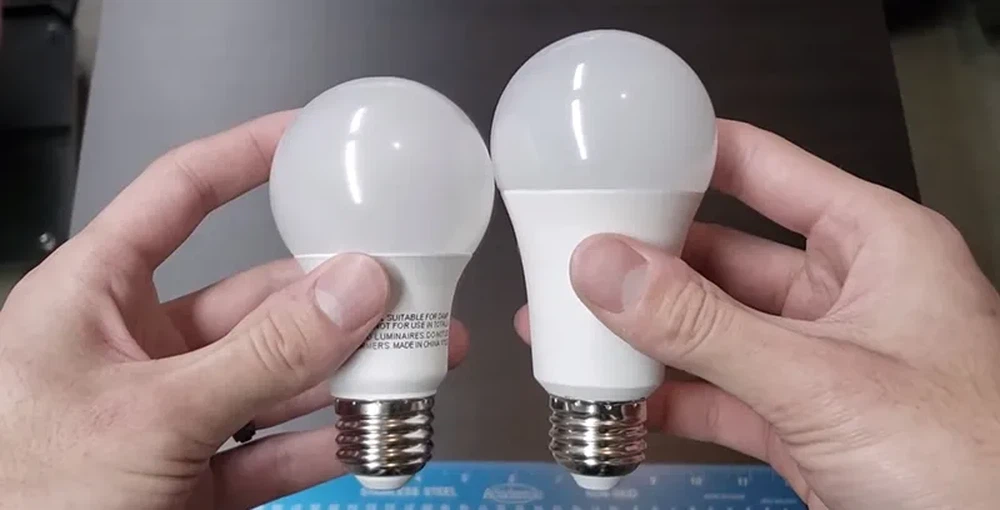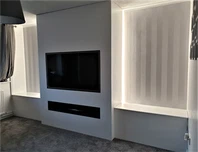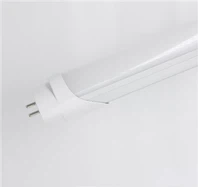What Do You About A19 and A21?
A19 Vs A21 Light Bulbs
Lightbulb shopping can be challenging since there are so many different sizes and designs to pick from. Even if all you need is a standard 100-Watt LED light bulb, there are undoubtedly a tonne of variations available. The A19 and A21 variants are two of the most popular choices. Although the A19 is frequently regarded as the "standard" bulb for most families, you don't have to use it in all of your home's light fixtures because the A21 is also a very popular and adaptable alternative.
This raises a few crucial questions. What distinguishes A19 light bulbs from A21 light bulbs? Can you swap A19 and A21 bulbs? Most importantly, which of the two types of bulbs—A21 or A19—is truly the better choice for you?
We will address all of these concerns and more in today's tutorial, but let's first look at the many A-type bulb varieties available.
What Is The A-Type Light Bulb?
The common pear-shaped light bulb that fits into E26 light fixtures is the A-type light bulb. These light bulbs have been used in many homes and businesses for more than a century and are now mainstream. A-type bulbs can be incandescent, CFL, or LED as the "A" designation just designates the form. Yet, because of their high energy efficiency and extended lifespan, A-type LED bulbs are becoming more and more popular.
The eighth-of-an-inch diameter of the bulb is indicated by the number that comes after the "A". The most popular A-type bulbs, for instance, are A15, A19, A21, A23, and A25. This indicates that to get the diameter of the bulb, all you need to do is divide the given value by 8. The chart below shows the precise measurements:
|
Bulb Type |
Diameter |
Height |
|
A15 |
1.875 inches |
3.39 inches |
|
A19 |
2.375 inches |
4.13 inches |
|
A21 |
2.625 inches |
5 inches |
|
A23 |
2.875 inches |
5-6 inches |
|
A25 |
3.125 inches |
6-7 inches |
The most widely used A-type bulbs are A19 and A21, though you can typically buy all of these bulbs online or at a hardware store. This is partly because both lights provide the ideal balance of brightness and adaptability. They are neither too large to comfortably fit into most light fittings nor too little to adequately illuminate most spaces.
What Sets A19 and A21 Light Bulbs Apart?
It would be clear from a direct visual comparison that A21 and A19 are different sizes. The largest segment of an A19 bulb is 2.375 inches wide, while the largest segment of an A21 bulb is 2.635 inches wide, as shown in the table above. Even though this might not seem like a significant contrast, when you take into account the height variations, it becomes a much more striking contrast. A21 bulbs are around 5 inches tall, compared to A19 bulbs' 4.13 inches. As a result, the size difference between A21 and A19 bulbs is the biggest and most noticeable.
But a common misconception is that because the bulbs are different sizes, they can't possibly fit in the same light fixtures. Thankfully, this is not the situation. A21 and A19 are equivalent as far as compatibility with light sockets is concerned. As a result, both types of bulbs can still be used in the majority of conventional lamps that need an E26 Edison screw. Although you might be able to screw in the bulb, you might be forced to use an A19 if your light fixture has a small enclosure or lamp head that won't fit a larger bulb.
A21 bulbs: Are they brighter than A19s? Exactly why is the A21 bulb superior to the A19?
Although A21 and A19 bulbs can be used interchangeably, this does not indicate that the outcomes are same. In actuality, their size disparities go beyond aesthetics. You could also require a larger size bulb if you want a 100-Watt (or greater) bulb to generate additional light. This is because more light generates more heat. Smaller bulbs provide less surface area for heat to escape through, which might harm the internal circuitry (particularly with LED lights). A21 bulbs often have greater wattages because of this, which results in more light being produced. At the same time, the expanded size completely eliminates the heating problem.
When deciding between the A21 and A19 bulbs, you need take more than just size and overall brightness into account. Together with these factors, you should consider how the light will be dispersed, the size and layout of the space in which you intend to use the bulb, and your utility budget. For instance, most houses or flats need adequate illumination in the kitchen, whereas bedrooms and sat areas need softer or warmer lighting. A19 and A21 bulbs both create 360-degree omnidirectional beams, however they do not illuminate the same amount of space equally.
A21 bulbs generate stronger, brighter light than A19 bulbs because they can support greater wattages (and so create more lumens). This also implies that A21 bulbs use more energy, as you might expect. Although though LED bulbs of any sort are frequently the most affordable and cost-effective bulb option, selecting A19 over A21 will almost surely result in a reduction in your monthly power costs. But, A21 bulbs are the better choice if you have rooms or parts of your home that need powerful, brilliant illumination.
Why The A19 Bulb Could Be Better For You Than The A21
The A19 and A21 bulbs may be used interchangeably since they both fit into the same E26 socket used in most light fixtures, as was already noted. The ideal bulb for you, however, can ultimately depend on the design of your light fixture. This is because the A19 bulb size has been the norm for more than a century. As a result, the majority of lamp and lighting fixture manufacturers have created their products to fit the A19's height and breadth.
So, the A19 is a perfect choice if you're merely seeking to buy a new set of bulbs that will operate in a variety of fixtures and rooms in your home. As it is the standard, no changes are necessary for it to fit in any standard fixture.
Alternately, you could have trouble attempting to fit an A21 bulb into narrow frames, harps, or lampshades. If a bigger bulb is in touch with the shade itself for an extended length of time, you may potentially create a dangerous condition depending on the substance of your lampshade.
The A19 is more affordable in addition to working with the majority of conventional sockets, frames, harps, and shades. It consumes less power than the A21, is less brilliant (but still generates enough light), and creates less heat. This implies that the A19 is the best bulb for you if you want a well-lit room without having to spend higher power bills.
Are you interested in learning more about A19 and A21 bulbs? Are you ready to purchase high-quality LED bulbs at affordable prices? If so, be sure to check out the products available at benweilighting today!







